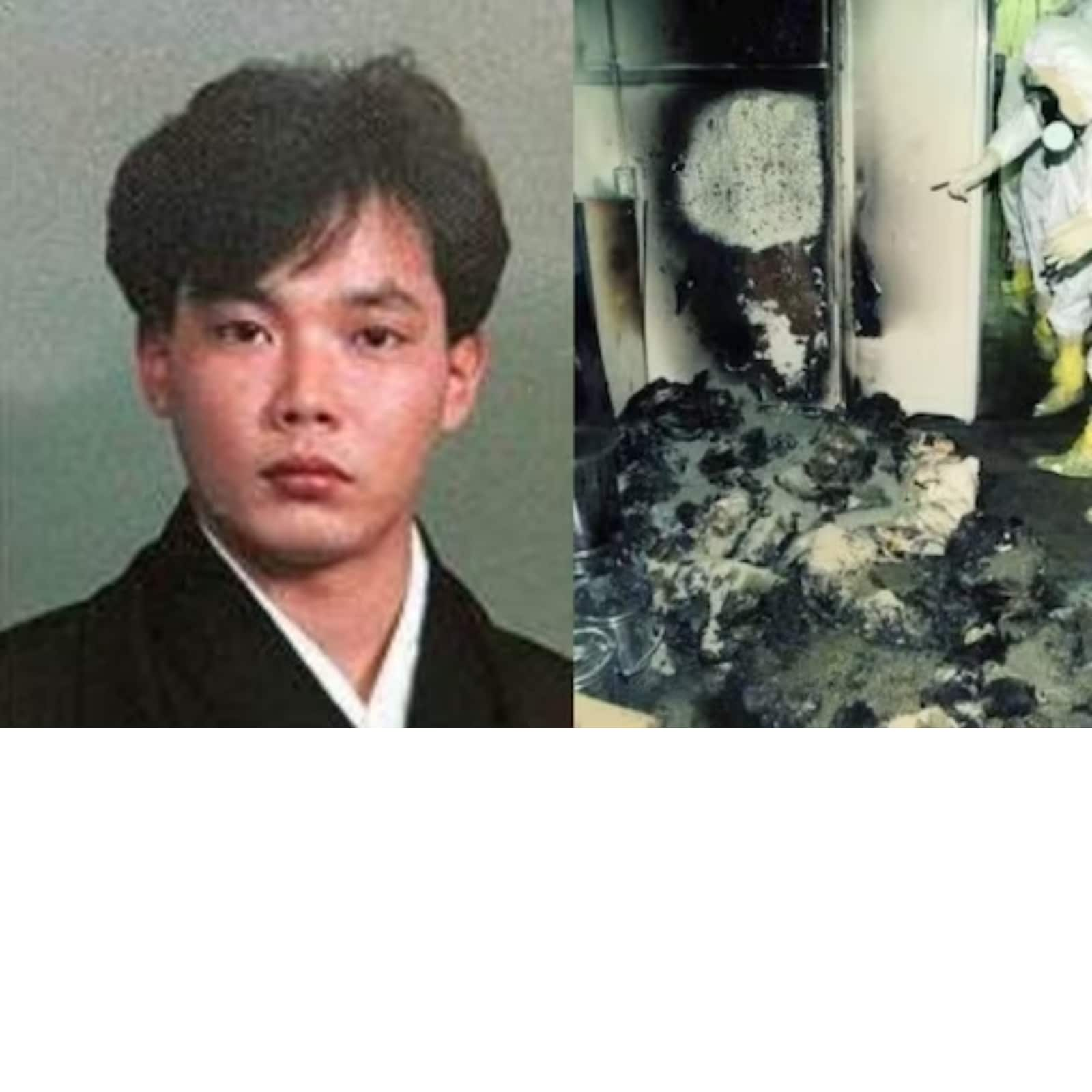On October 1999, the world witnessed one of the darkest days in nuclear history when a criticality accident occurred at the Tokaimura nuclear fuel processing facility in Japan. Among the victims was Hisashi Ouchi, whose story became a tragic symbol of the dangers of nuclear energy. His case highlighted the devastating effects of extreme radiation exposure and the importance of safety protocols in nuclear facilities. This is not just a story about a man - it's a wake-up call for humanity.
As we dive deeper into Hisashi Ouchi's story, we're not just talking about numbers and scientific data. We're exploring the human side of nuclear disasters, the consequences faced by real people, and the lessons we must learn to prevent such tragedies in the future. This is a story that needs to be told, not just for historical purposes, but to remind us of the power and risks associated with nuclear technology.
What makes Hisashi Ouchi's case so unique is the level of radiation exposure he endured and the medical challenges faced by his treatment team. His story became a case study for radiation medicine, pushing the boundaries of what was thought possible in treating extreme radiation sickness. This article aims to shed light on this tragic event while emphasizing the importance of safety in the nuclear industry.
- Murray Brothers Mortuary A Legacy Of Compassion And Care
- Unveiling The Legacy Obituaries Mpls Ndash A Journey Through Lives Remembered
Understanding the Tokaimura Accident
The Tokaimura accident wasn't just an ordinary incident; it was a catastrophic failure of safety protocols that changed the nuclear industry forever. On that fateful day in September 1999, workers at the JCO facility were mixing uranium solution in a precipitation tank. Due to improper training and violations of safety regulations, they added seven times the allowed amount of uranium, triggering a self-sustaining nuclear chain reaction.
What Happened That Day?
Let's break it down step by step:
- Workers were preparing uranium fuel for reactors
- They used a precipitation tank instead of a specially designed dissolving tank
- Too much uranium was added, exceeding critical mass
- A blue glow filled the room as the chain reaction began
- Workers were exposed to extremely high levels of radiation
When the chain reaction started, workers reported seeing a mysterious blue light - a phenomenon known as Cherenkov radiation. This marked the beginning of a nightmare that would claim lives and change nuclear safety standards worldwide.
- Gloria Hernandez Shadow Health The Ultimate Guide To Mastering Your Virtual Clinical Experience
- What Is June 6 Zodiac Sign Discover Your Cosmic Personality
Who Was Hisashi Ouchi?
Biographical Information
Before the accident, Hisashi Ouchi was a regular employee at the JCO facility, working in the uranium processing department. Let's take a look at some key details about his life:
| Name | Hisashi Ouchi |
|---|---|
| Born | April 27, 1968 |
| Age at Accident | 31 years old |
| Occupation | Uranium processing technician |
| Employer | JCO Company |
Hisashi was a dedicated worker who followed the instructions given by his supervisors. Unfortunately, those instructions violated basic safety protocols, leading to the tragic accident that would ultimately take his life.
The Medical Consequences of Extreme Radiation Exposure
When Hisashi Ouchi was exposed to approximately 17 sieverts of radiation, his body endured damage that modern medicine had never seen before. To put this into perspective, a dose of 5 sieverts is considered lethal for 50% of exposed individuals without treatment.
Immediate Effects
- Vomiting and nausea within minutes
- Burn-like skin injuries
- Severe internal organ damage
- Loss of bone marrow function
Doctors at the University of Tokyo Hospital faced unprecedented challenges in treating Hisashi's condition. His case pushed the boundaries of medical science, as they attempted treatments that had never been tried before on humans.
Medical Treatment and Ethical Dilemmas
Hisashi Ouchi's treatment became a global medical sensation, with experts from around the world following his case closely. The medical team performed multiple bone marrow transplants and attempted various experimental treatments, but his condition continued to deteriorate.
Key Medical Challenges
- Rebuilding bone marrow function
- Managing internal organ failure
- Preventing infection in compromised immune system
- Dealing with psychological effects
The ethical questions surrounding Hisashi's treatment were profound. Should they continue aggressive treatment knowing the low chances of survival? How much suffering was acceptable in the pursuit of medical knowledge? These questions haunted both the medical team and Hisashi's family.
Impact on Nuclear Safety Regulations
The Tokaimura accident led to sweeping changes in nuclear safety regulations worldwide. Regulatory bodies re-evaluated their standards, and new protocols were implemented to prevent similar incidents in the future.
Key Changes Implemented
- Stricter training requirements for nuclear workers
- Improved safety equipment and procedures
- Enhanced regulatory oversight
- International cooperation on safety standards
The lessons learned from this tragedy have significantly improved nuclear safety worldwide, but the memory of Hisashi Ouchi serves as a constant reminder of the dangers that can arise from human error and inadequate safety measures.
Public Reaction and Global Awareness
The Tokaimura accident and Hisashi Ouchi's story captured global attention, sparking debates about nuclear energy and safety. Media coverage brought the issue to the forefront of public consciousness, leading to increased scrutiny of nuclear facilities worldwide.
How the Public Reacted
- Increased demand for transparency in nuclear operations
- Greater public interest in safety protocols
- Support for accident victims and their families
- Renewed focus on alternative energy sources
Hisashi's story became a symbol of the need for vigilance in nuclear operations. The public outcry following the accident led to significant improvements in safety measures and increased accountability in the nuclear industry.
Scientific Understanding of Radiation Effects
Hisashi Ouchi's case provided invaluable insights into the effects of extreme radiation exposure on the human body. Researchers gained unprecedented knowledge about the biological impacts of high-dose radiation, leading to advances in radiation medicine.
Key Scientific Findings
- Understanding of radiation's impact on bone marrow
- Development of new treatment protocols
- Improved methods for measuring radiation exposure
- Enhanced understanding of radiation sickness progression
The data collected during Hisashi's treatment has contributed to better preparedness for future radiation incidents, though no one hopes to see such knowledge put to use again.
Legacy of Hisashi Ouchi
Though Hisashi Ouchi's life was tragically cut short, his legacy lives on through the advancements in nuclear safety and radiation medicine that resulted from his case. His story serves as a powerful reminder of the importance of safety protocols and the human cost of nuclear accidents.
What We've Learned
- Importance of rigorous safety standards
- Necessity of proper training and supervision
- Value of international cooperation in nuclear safety
- Need for continuous improvement in safety measures
Hisashi's memory continues to inspire efforts to make nuclear energy safer and more reliable. His story is a testament to the resilience of the human spirit and the importance of learning from our mistakes.
Conclusion: Moving Forward with Safety in Mind
As we reflect on Hisashi Ouchi's tragic story, we're reminded of the power and risks associated with nuclear technology. The Tokaimura accident and its consequences have taught us valuable lessons about safety, responsibility, and the importance of following proper protocols.
We invite you to share your thoughts and reactions in the comments section below. How has Hisashi's story impacted your understanding of nuclear safety? What lessons do you think are most important to remember as we continue to develop nuclear technology? Let's keep the conversation going and work together toward a safer nuclear future.
Table of Contents
- Understanding the Tokaimura Accident
- Who Was Hisashi Ouchi?
- The Medical Consequences of Extreme Radiation Exposure
- Medical Treatment and Ethical Dilemmas
- Impact on Nuclear Safety Regulations
- Public Reaction and Global Awareness
- Scientific Understanding of Radiation Effects
- Legacy of Hisashi Ouchi
- Conclusion: Moving Forward with Safety in Mind
- Bozemans Best Funeral Homes A Comprehensive Guide To Honoring Your Loved Ones
- Jose Baston And Eva Longoria A Love Story That Captured Hearts Worldwide


